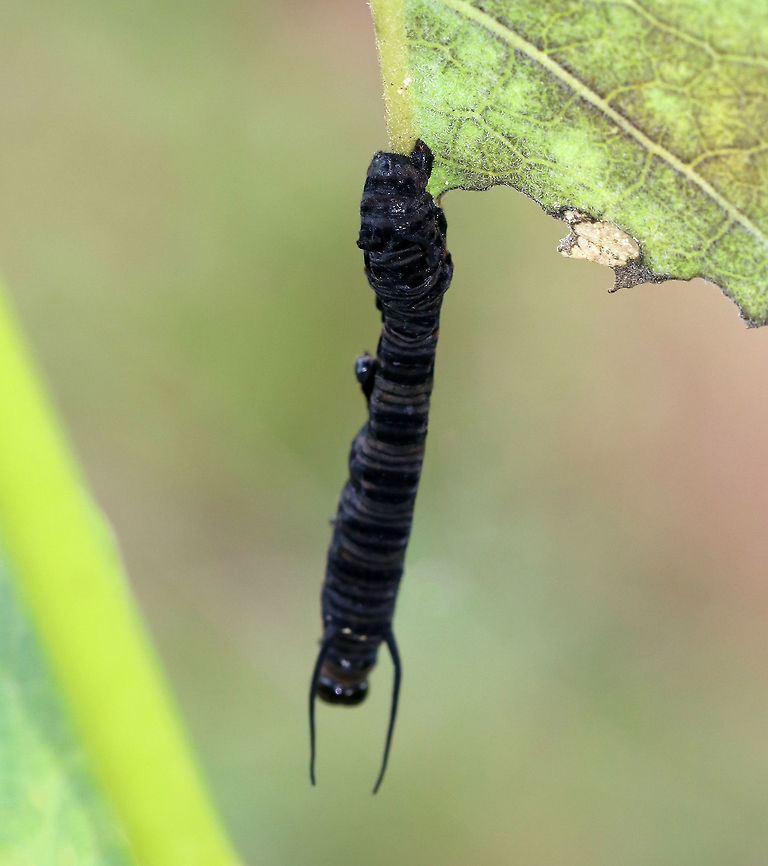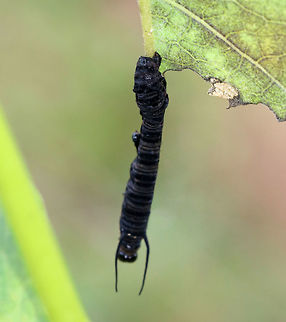 PromotedSpecies introCountry intro
PromotedSpecies introCountry intro
Black Death - Nuclear Polyhedrosis Virus (NPV) on Monarch Caterpillar (Danaus plexippus)
This virus enters the nucleus of infected cells and reproduces until the cell begins to produce crystals in the fluids of its host. The host becomes swollen with virus-containing fluid, turns black, and dies.
Habitat: Infected monarch caterpillar (Danaus plexippus)

The nuclear polyhedrosis virus (NPV), part of the family of baculoviruses, is a virus affecting insects, predominantly moths and butterflies.
Similar species: incertae sedis
By Christine Young
All rights reserved
Uploaded Jan 17, 2019. Captured Sep 7, 2018 10:20 in 1563 Post Rd, Wells, ME 04090, USA.

comments (12)
Thanks Leuba, I love finding odd things in nature :) Posted 6 years ago